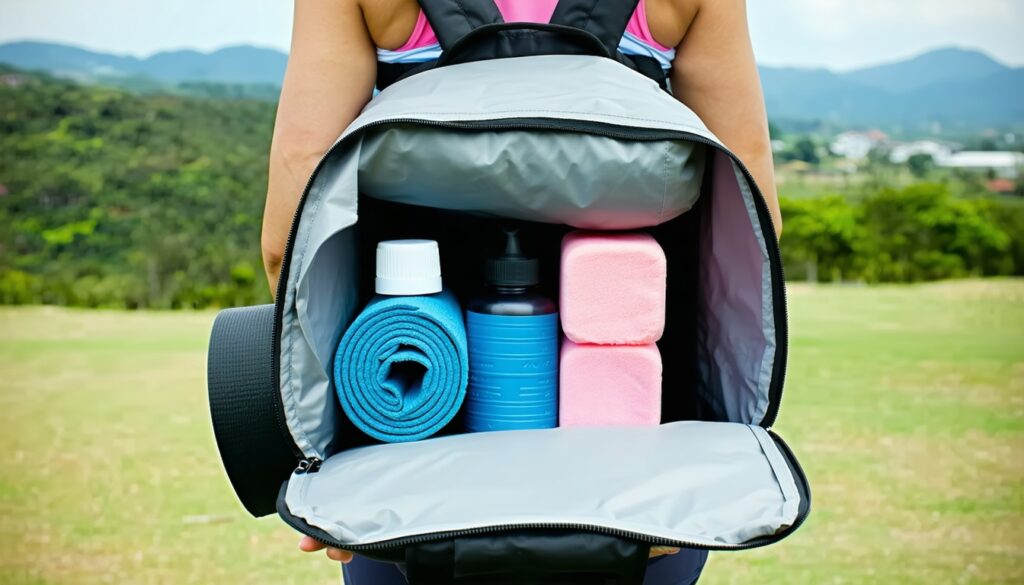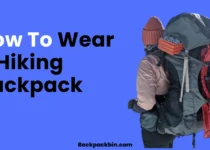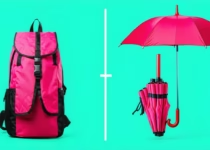How To Fit a Bulky Yoga Mat and Accessories into a Backpack

Choosing the Right Yoga Backpack
Selecting the right yoga backpack is essential for health-conscious individuals who regularly practice yoga. A well-chosen backpack not only accommodates a bulky yoga mat but also provides space for essential accessories. Here are some key considerations when choosing a yoga backpack.
Yoga Mat Size Considerations
Understanding the size of your yoga mat is crucial when selecting a backpack. Standard yoga mats typically measure 68 inches in length and 24 inches in width (173 x 61 cm), with some extending up to 72 inches for added comfort. For taller individuals, extra-long mats can reach 80 to 85 inches (203 or 216 cm) (Asana at Home).
Additionally, wider mats, measuring up to 36 inches (91 cm), provide extra space for comfort and alignment, especially beneficial for those with broader shoulders. The thickness of the mat also plays a role; thicker mats (4mm to 10mm) offer cushioning for joints, while thinner mats (1-3mm) are lightweight and easier to pack for travel.
| Mat Type | Length (inches) | Width (inches) | Thickness (mm) |
|---|---|---|---|
| Standard | 68 – 72 | 24 | 4 – 6 |
| Extra Long | 80 – 85 | 24 | 4 – 10 |
| Wider | Up to 36 | 36 | 4 – 10 |
| Thinner | 68 | 24 | 1 – 3 |
Backpack Size and Capacity
When considering a yoga backpack, it’s important to assess its size and capacity to ensure it can accommodate your mat and accessories. A backpack should have enough space for not only the mat but also other essentials like blocks, straps, and towels.
Practical aspects such as weight and portability are crucial. A lightweight backpack is ideal for travel, while a more durable option may be better for stationary practice. Additionally, budget-friendly options are available, ensuring good quality without breaking the bank.
For more insights on selecting the right backpack, check out our guide on how to choose the right yoga backpack for your practice and the comparison of yoga mat backpack vs tote vs strap: pros and cons.
Features to Look for in a Yoga Backpack
When selecting a yoga backpack, it’s essential to consider various features that enhance functionality and comfort. This section will cover the importance of frame type and ventilation, as well as pack access and pockets.
Frame Type and Ventilation
The frame type of a yoga backpack plays a significant role in its overall comfort and usability. A well-structured frame can help distribute weight evenly, making it easier to carry a bulky yoga mat and accessories. Ventilation is also crucial, especially for those who may carry their backpack for extended periods. Proper ventilation helps to keep the back cool and dry, preventing discomfort during travel or yoga sessions.
| Feature | Importance |
|---|---|
| Frame Type | Distributes weight evenly, enhances comfort |
| Ventilation | Keeps the back cool and dry, prevents discomfort |
Consider looking for backpacks with adjustable suspensions that can be customized to fit the user’s torso length and hip circumference. This ensures that the majority of the weight is supported by the hips, making it easier to carry heavier loads. For more information on how to choose the right yoga backpack, check out our guide on how to choose the right yoga backpack for your practice.
Pack Access and Pockets
Pack access and the number of pockets available are vital features to consider when choosing a yoga backpack. A backpack with multiple access points allows for easier retrieval of items, especially when the backpack is packed tightly. Look for designs that offer top-loading access as well as side zippers for quick access to essentials.
Pockets are essential for organizing yoga gear and personal items. A well-designed backpack should have:
- Main compartment for the yoga mat and larger accessories
- Side pockets for water bottles or yoga blocks
- Front pockets for smaller items like keys, phones, or towels
| Pocket Type | Purpose |
|---|---|
| Main Compartment | Holds yoga mat and larger items |
| Side Pockets | For water bottles or blocks |
| Front Pockets | For keys, phones, and towels |
Choosing a backpack with the right combination of access points and pockets can significantly enhance the experience of carrying yoga gear. For more tips on how to fit a bulky yoga mat and accessories into a backpack, visit our article on yoga mat backpack vs tote vs strap: pros and cons.
Selecting the Ideal Backpack Fit
Finding the right fit for a yoga backpack is essential for comfort and functionality, especially when carrying a bulky yoga mat and accessories. This section will cover torso length and hip circumference considerations, as well as options specifically designed for women and youth.
Torso Length and Hip Circumference
When selecting a yoga backpack, it is important to consider torso length and hip circumference. The majority of the backpack’s weight should be supported by the hips, and adjustable suspensions can help customize the fit.
To determine the appropriate size, individuals can measure their torso length from the base of the neck to the top of the hip bones. This measurement will help in selecting a backpack that fits well and distributes weight evenly.
| Measurement Type | Description |
|---|---|
| Torso Length | Measure from the base of the neck to the top of the hip bones. |
| Hip Circumference | Measure around the widest part of the hips. |
Women-Specific and Youth-Specific Options
Women-specific backpacks are designed with smaller frame sizes and contoured hip belts and shoulder straps to accommodate wider hips and breasts. This makes them suitable for young or shorter backpackers.
Youth-specific backpacks offer smaller capacities and adjustable suspensions to accommodate a child’s growth, making them ideal for young backpackers. Women’s backpacks with smaller frame sizes can also work well for young backpackers, ensuring a comfortable fit for all users.
| Backpack Type | Features |
|---|---|
| Women-Specific | Smaller frame sizes, contoured hip belts, and shoulder straps. |
| Youth-Specific | Smaller capacities, adjustable suspensions for growth. |
Choosing the right fit is crucial for carrying yoga gear comfortably. For more information on selecting the best backpack for yoga, check out our guide on how to choose the right yoga backpack for your practice.
Top Travel-Friendly Yoga Mats
When considering how to fit a bulky yoga mat and accessories into a backpack, selecting a travel-friendly yoga mat is essential. Here are three top options that combine portability, functionality, and comfort for health-conscious individuals.
MIKKOA Travel Yoga Mat
The MIKKOA Travel Yoga Mat is designed for convenience and ease of use. It folds compactly into the size of a pair of jeans, making it easy to pack. When unfolded, it lies completely flat with zero creases, ensuring a smooth surface for practice. The bottom of the mat is made of grippy rubber that clings well to the floor, preventing any bunching or movement during transitions. This feature is particularly beneficial for those who practice dynamic styles of yoga.
| Feature | Description |
|---|---|
| Folded Size | Comparable to a pair of jeans |
| Surface | Lies flat with zero creases |
| Bottom Material | Grippy rubber for stability |
For more information on choosing the right yoga backpack for your practice, check out our guide on how to choose the right yoga backpack for your practice.
YOGO Ultralight Travel Yoga Mat
The YOGO Ultralight Travel Yoga Mat is incredibly compact and features built-in straps and a handle for easy portability. Made from renewable tree rubber, this mat is designed to be sanitary, ensuring that the bottom never comes in contact with the top, which helps maintain cleanliness during use. Its lightweight design makes it an excellent choice for those who travel frequently.
| Feature | Description |
|---|---|
| Weight | Ultralight for easy carrying |
| Material | Renewable tree rubber |
| Sanitary Design | Bottom never contacts the top |
For tips on how to carry blocks, towels, and water bottles in a yoga backpack, visit our article on how to carry blocks towel water bottle in a yoga backpack.
Manduka EKO Superlite Travel Mat
The Manduka EKO Superlite Travel Mat is known for its quality, grip, and smooth surface. It is made from sustainably harvested natural tree rubber and is free from PVC, toxic plasticizers, and harmful dyes. While it offers excellent grip, users may find that it can slip during vinyasa transitions, so it’s best suited for those who practice slower-paced styles.
| Feature | Description |
|---|---|
| Material | Sustainably harvested natural tree rubber |
| Eco-Friendly | No PVC or harmful dyes |
| Grip | Excellent, but may slip during fast transitions |
For more insights on the best lightweight yoga backpacks for commuting, check out our article on best lightweight yoga backpacks for commuting.
These travel-friendly yoga mats provide the perfect balance of portability and performance, making them ideal for health-conscious individuals who want to maintain their yoga practice while on the go.
Folding and Packing Your Yoga Mat
Packing a bulky yoga mat efficiently can make a significant difference when traveling. Understanding the best folding techniques and cleaning tips can help ensure that the mat remains in good condition and is easy to transport.
Folding Techniques for Travel
When preparing to pack a yoga mat, there are a couple of effective folding methods to consider.
-
Square Folding: Fold the mat into squares for a flat and compact packing solution. This method is ideal for placing the mat in a carry-on or backpack.
-
Rolling: Roll the mat tightly from top to bottom with the practice side facing out. This helps the mat lay flatter when unrolled later.
| Folding Method | Description | Best For |
|---|---|---|
| Square Folding | Fold into squares for compactness | Carry-on or backpack |
| Rolling | Roll tightly with practice side out | Easy unrolling later |
For additional packing tips, consider adding small accessories like towels for grip and sweat absorption, or straps for carrying the mat or enhancing poses on the go.
Cleaning and Unrolling Tips
Before packing the yoga mat, it is essential to clean it with a gentle cleanser or cloth, especially after a class. Ensuring the mat is dry before packing helps extend its life, keeps luggage fresh, and provides a clean surface when unrolling it at the destination.
Upon arrival, allow the mat to settle and release any folds or creases by giving it a few minutes to acclimate after unrolling. This ensures the mat is ready for use and provides a smooth practice experience.
By following these folding and cleaning techniques, health-conscious individuals can effectively manage their yoga gear while traveling, ensuring a seamless transition from packing to practice. For more tips on how to fit a bulky yoga mat and accessories into a backpack, check out our article on yoga backpack packing tips for travel and retreats.
Essential Accessories for Yoga Practice
When practicing yoga, having the right accessories can enhance the experience and support individual needs. This section covers two essential categories: blocks and straps, as well as bolsters and towels.
Blocks and Straps
Blocks and straps are vital props in yoga practice. They provide support, aid in proper alignment, and extend reach in various poses. While blocks are used more frequently, having both blocks and straps on hand can be beneficial for different poses and levels of flexibility.
| Accessory | Purpose |
|---|---|
| Yoga Blocks | Help with balance and stability, assist in reaching poses, and provide support for various body types. |
| Yoga Straps | Aid in stretching, improve flexibility, and assist in holding poses for those who may not reach their feet or hands. |
These accessories are lightweight and easy to pack, making them perfect for travel. For tips on how to fit these items into a backpack, check out our article on how to carry blocks, towel, water bottle in a yoga backpack.
Bolsters and Towels
Bolsters are recommended for restorative yoga, providing support under the knees and back, especially during prenatal yoga classes. Towels, particularly specialized yoga towels, are useful for hot yoga sessions, offering extra grip and quick-drying properties. Blankets can also be used for additional support in various poses, especially for those experiencing discomfort on the floor.
| Accessory | Purpose |
|---|---|
| Yoga Bolsters | Provide support and comfort in restorative poses, helping to relax the body. |
| Yoga Towels | Enhance grip, absorb sweat, and can be layered on top of mats for added comfort. |
Consider adding small accessories like towels (eQua® or yogitoes®) for added grip and sweat absorption. These items are essential for better grip and stability during classes.
By incorporating these essential accessories into their practice, individuals can enhance their yoga experience, making it more enjoyable and effective.


